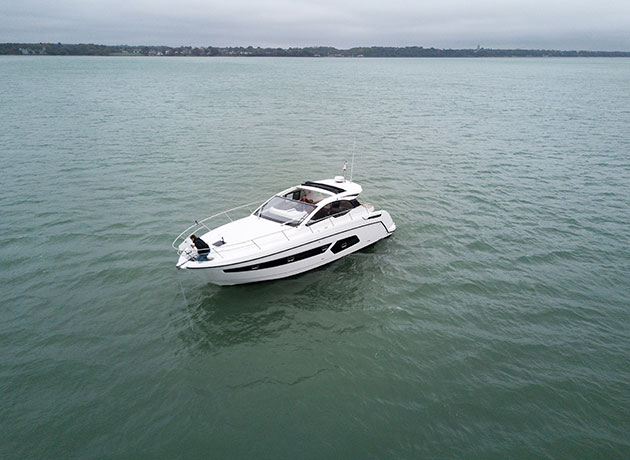In our latest How To guide we demonstrate how to trim your boat if you are travelling in a beam sea
We have looked at helming a motor boat upwind, where we use the trim tabs to bring the bow down and allow its shape to cut the waves, and downwind, where we raise the tabs to keep the bow up and rest the hull on the back of the waves.
Now let’s look at travelling in a beam sea, when we can make excellent progress if we concentrate on keeping the boat trimmed relatively level.
The issue with a beam sea or beam wind is that it’s trying to push the boat downwind and off course. Your natural instinct is to counteract this effect by steering into the elements and reducing the leeway.
This will cause the boat to lean into the waves, making for a harder ride and a more tiring passage. It also changes where you need to look, as you have to keep one eye on where you’re going and one eye on the waves rolling into you.
In this situation, using the trim tabs to level the boat also makes helming much easier. This involves lowering the tab on the windward side to create lift and counteract the lean induced by steering into the breeze.
Levelling the boat allows the hull’s vee to cut through the waves for a softer ride and lifts the topsides higher off the water for a drier passage and better vision.

VIDEO: How to – Head to windward
In our latest boat handling video, Jon Mendez shows how best to trim the boat when you head to windward

VIDEO: How to use a lock
In this instalment we demonstrate the best techniques to use when entering and exiting a lock basin
The trim tab also gives a gentle steering effect by increasing drag and pivoting the boat to windward, exactly where you want it to go. If the wind picks up more, you may want to overextend the windward tab to induce a slight lean away from the waves. It helps the waves slide under the boat rather than slamming into the beam.
If the wind is slightly forward of the beam, maybe tab down a bit on both sides to get the bow cutting through the chop before adding tab on the windward side to level the boat.
If the wind is coming from slightly behind the beam, you usually just need some windward tab, but all craft are different so experimentation may be needed. As the sea state worsens, you’ll need to lift your vision to look at the waves further ahead and pick a path around the largest ones.
This involves deciding early if you want to turn to windward to go behind a larger wave, turn slightly downwind to run just ahead of a breaking wave or turn fully downwind as a wave breaks right ahead of you.
Trimmed correctly, your boat will be safer and more responsive, allowing you to enjoy the ride.






















